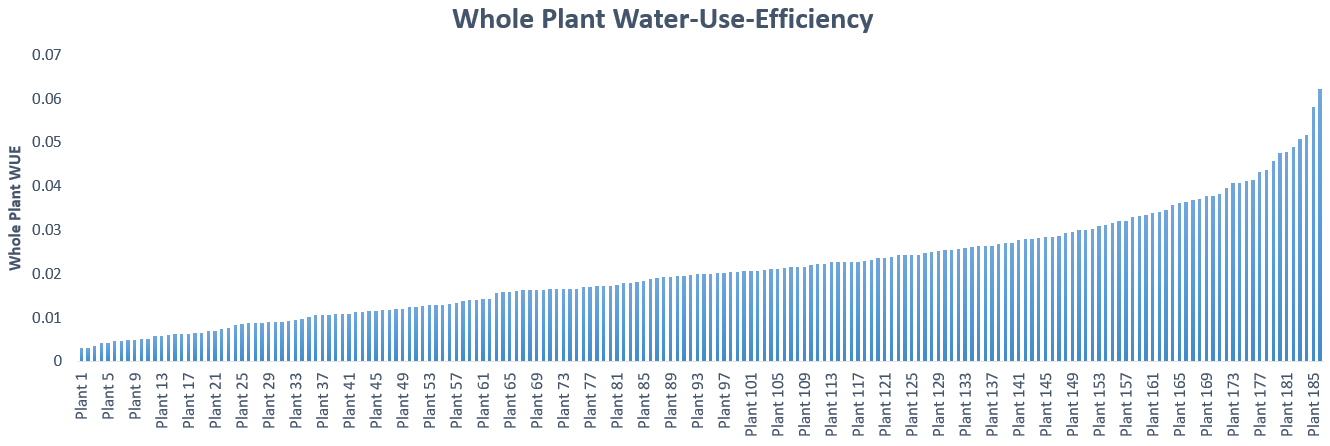Would you believe about 1,700 liters of water is required to produce a 100g bar of chocolate?
This seems like a ridiculously high number. So, in the famous words of Julius Sumner-Miller, “Why is it so?”

Well, the Cocoa tree, which provides the core ingredient of our chocolate, consumes copious amounts of water yet has a low yield (number of beans per tree). And this astonishing fact is not limited to cocoa.
The linear tradeoff between water consumption and a plant’s production yield has been extensively documented. Due to water limitations and climate change, one of the greatest challenges agro-scientists face today is how to overcome this tradeoff in order to improve the plant Water-Use-Efficiency while maintaining high productivity.Crops demand enormous amounts of water when producing yield. For example, to produce 1kg of white rice requires about 2,500 liters of water; and corn is no slouch either at about 1,200 liters on average.[1]
In fact, most of the water transpires to the air as a side effect to photosynthesis CO2 absorption.
Water-Use-Efficiency is the amount of water transpired per unit biomass produced. This key trait, together with continuous measurements of the biomass and water-balance of the plant (transpiration, root influx), as well as the environmental water-status of the whole plant, can provide the researcher with a holistic view of the plant-water relations and important insights into the plant’s dynamic reaction to environmental changes.
As the water status of the plant is directly linked to yield, applying this vast plant-water profiling on many plants simultaneously helps researchers to quickly identify the plants that are managing their water-productivity balance in an effective manner under different environments.

And this is the exact approach of PlantDitech. Our technology continuously monitors and directly measures the whole-plant water balance in conjunction with the environment (soil and atmosphere) and plant biomass.
By simultaneously measuring a large number of plants and using advanced analytical tools, PlantDitech extracts a very detailed plant physiological profile in response to changing ambient conditions for the characterization and comparison of plant growth and productivity.
This data is priceless in helping select the best performing plants based on their functional physiological characteristics, resulting in optimizing crop yields, water-use-efficiency or stress response.









